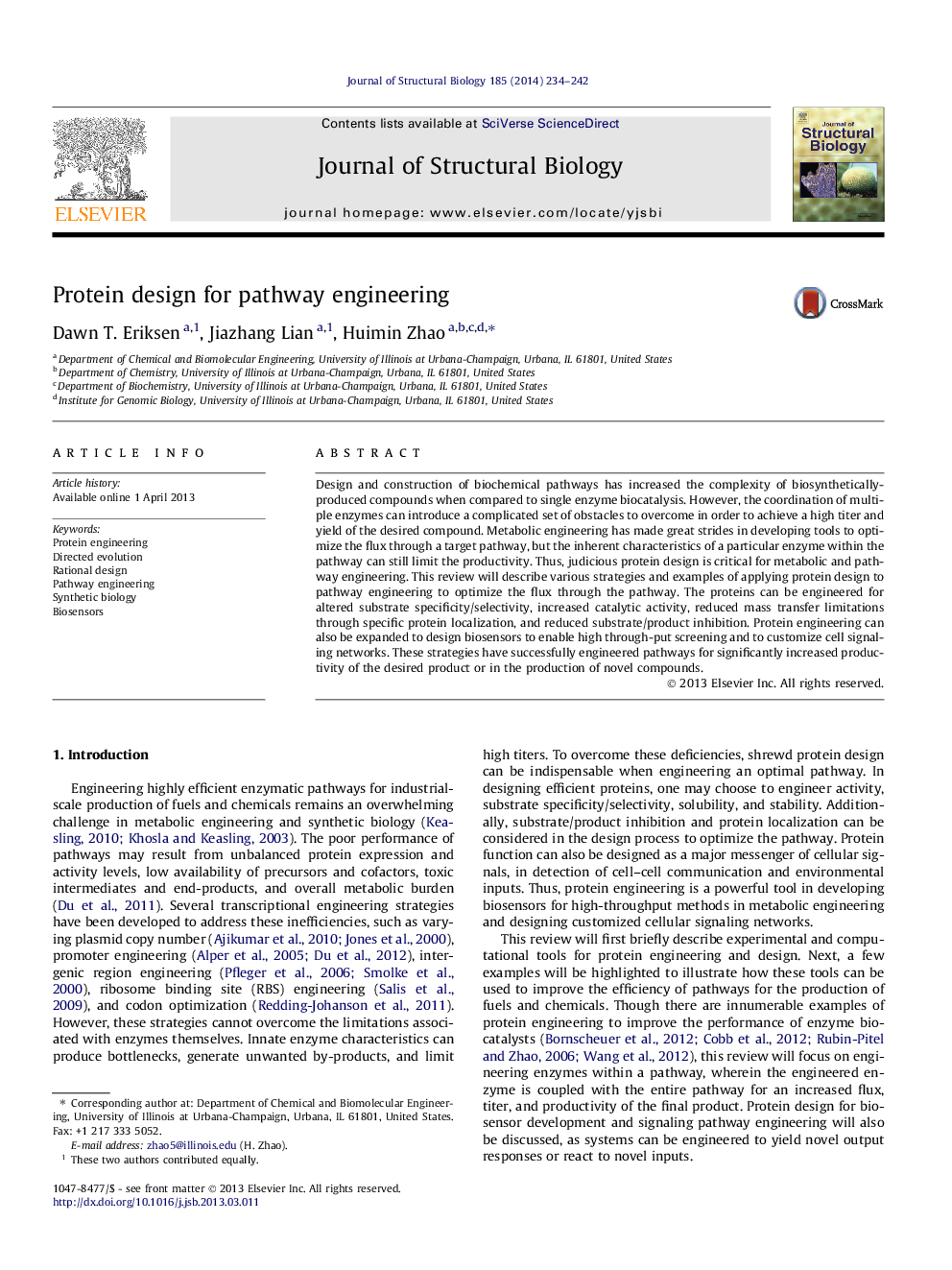| Article ID | Journal | Published Year | Pages | File Type |
|---|---|---|---|---|
| 2828509 | Journal of Structural Biology | 2014 | 9 Pages |
Design and construction of biochemical pathways has increased the complexity of biosynthetically-produced compounds when compared to single enzyme biocatalysis. However, the coordination of multiple enzymes can introduce a complicated set of obstacles to overcome in order to achieve a high titer and yield of the desired compound. Metabolic engineering has made great strides in developing tools to optimize the flux through a target pathway, but the inherent characteristics of a particular enzyme within the pathway can still limit the productivity. Thus, judicious protein design is critical for metabolic and pathway engineering. This review will describe various strategies and examples of applying protein design to pathway engineering to optimize the flux through the pathway. The proteins can be engineered for altered substrate specificity/selectivity, increased catalytic activity, reduced mass transfer limitations through specific protein localization, and reduced substrate/product inhibition. Protein engineering can also be expanded to design biosensors to enable high through-put screening and to customize cell signaling networks. These strategies have successfully engineered pathways for significantly increased productivity of the desired product or in the production of novel compounds.
